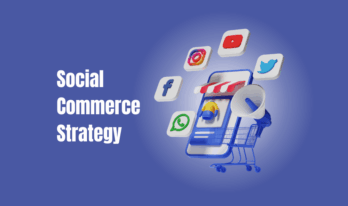If you have come across the Software as a Service (SaaS), you may have heard of the term Lead Velocity. This marketing metric is gaining a lot of traction with the Lead Generation & Demand Generation Organizations.
The lead velocity rate refers to the rate at which the Qualified Leads grow each succeeding month.
In short, it means the number of potential customers you are currently working on to the customer conversion.
According to Jason Lemkin, Founder & CEO of SaaStr, “Lead Velocity Rate is real-time, not lagging, and it clearly predicts your future revenues and growth. And it’s more important strategically than your revenue growth this month or this quarter.
Hit your LVR goal every month… and you’re golden. And you’ll see the future of your business 12-18 months out, clear as can be.”
It is calculated by subtracting the qualified leads of the previous month from the qualified leads of the current month and then dividing that value by the qualified leads of the previous month and converting that fraction value in percentage. The following chart explains the formula in an easier and more understanding way.
If we break down a lead into four basic stages such as Marketing Qualified Lead (MQL), Sales Accepted Lead (SAL), Opportunity, and its conversion to a customer; with its formula, we can determine the movement of a lead from MQL to SAL or MQL to Opportunity or MQL to Lead Conversion.
This means it calculates the time required for a lead to move from one stage to another in the sales funnel.
This helps an organization to understand how the lead is moving from one stage to another, which in turn helps them to understand the strategy required going forward.
understand why the organization isn’t performing as per the expectations; or set the priorities based on the lead velocity rate as to where they would need to focus more.
We can understand whether the qualified leads in the current month are more than the qualified leads from the previous month with the LVR; it is a key indicator to understand future growth and revenue.
We can take immediate action to generate more leads before the end of the month with the LVR as LVR is a real-time indicator and not a lagging indicator as some other revenue metrics like MRR.
The only disadvantage of LVR is that as LVR does not indicate the actual revenue, this method becomes unreliable if the leads are not getting converted by the sales team. This can be addressed by integrating LVR with MQL to SQL Conversion rate and SQL to Win Conversion rate.
-
Undefined Goals:
For instance, it declines if the goals are not set properly. Especially, when the leads cannot reach the next stage if the teams are not clear with their goals.
-
Unsystematic Process & Disjointed Data:
If an organization is receiving the data from a third-party source and that data is not properly formatted or incompatible with the system that particular organization is implementing, the data processing takes more time than it should; and the number of qualified leads decreases leading to a poor rate.
-
Lack of Coordination between the Teams:
If there is a lack of coordination between the teams, it will result in a poor velocity rate. Moreover, the leads would not be submitted in the expected time; or if there's miscommunication between the teams then the data asked by the ‘x' team will not be as per the data provided ‘y' team resulting in the less amount of qualified leads; which will, in turn, mean poor lead velocity rate.
Now that we have discussed the causes of a poor lead velocity rate, we will discuss the steps required to boost the Lead Velocity Rate.
There are quite a few methods that help improve the lead velocity rate, and we will discuss the methods which have helped us improve our lead velocity rate.
-
Optimizing Segmenting Targeting, Positioning, and Differentiation Strategy a.k.a. STPD Marketing Strategy:
If STPD is implemented properly, it will be more likely to result in the qualified lead as the product/ or service is more relevant to the person targeted's requirements, which will improve the lead velocity rate as the qualified leads in the funnel will more.
The companies optimizing their STPD strategy according to product/ service, market conditions, and competition will have more chances of generating more qualified leads than the companies with stagnant strategies.
-
Improving Lead Nurturing Strategy:
If the organizations can find out the answers to questions like why the prospects are getting lost? What are our USPs? How can we reach out to the prospects with an appealing message? What is the average in-time of a lead in our sales funnel? And how to reduce that time? This will lead to a much-improved lead-nurturing strategy.
The chances of acquiring qualified leads will definitely improve.
-
Content Improvisation:
As we all know if potential customers are receiving meaningful, appealing, relevant, and comprehensive content; they are more likely to engage with the product.
For instance, creating content to address the issues the target audience is facing. As a result, it creates more interest in finding out more about the product/ service.
It is important to keep engaging with the target audience. Hence, increasing their interest and curiosity about the product/ service. As a result, the probability of a qualified lead is more
-
Automation:
As the automation tools use various lead scoring methods to indicate the most likely buyers and approximate time-frame for a purchase which helps the sales teams to prioritize the leads they need to shift their attention to and leads to sales conversions.
Automation also helps to segment the audience and helps you to send appealing content, personalized campaigns leading to more qualified leads.
Automation also improves the collaboration between the teams and addressing the team coordination issues by giving a clearly defined optimized solution.
-
Optimized Follow-up Strategies:
The follow-up methods deployed by the organizations play an all-important part in the lead conversions as the window of opportunity to convert a prospect is often very short and if you cannot quickly react and seize the opportunity in time; all the efforts taken by the teams are likely to go in vain.
A Quick, Optimized strategy plays an integral part in converting a qualified lead into a customer. A follow-up strategy can differ from one organization to another, as per the requirement, previous experiences, or according to perspectives of the decision-makers; but having a systematic strategy is necessary for a company to have a better lead velocity rate.
Hence, a Follow-up strategy plays an integral part in boosting the Lead velocity rate of a company.
You may also like to read:
Lead Generation Tips & Tools for Small Businesses
What is Lead Nurturing? Key Ways to Nurture Leads & Customers




